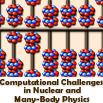Speaker
Aurel Bulgac
(Seattle, Washington University)
Description
The fascinating dynamics of superfluids, often referred to
as quantum coherence revealed at macroscopic scale, has
challenged both experimentalists and theorists for more than
a century now, starting with electron superconductivity
discovered in 1911 by Heike Kamerlingh Onnes. The
phenomenological two-fluid model of Tizsa and its
final formulation due to Landau, is ultimately a classical
approach in which Planck’s constant never appears and it is
unable to describe the generation and dynamics of the
quantized vortices, which are the hallmark characteristics
of superfluidity.
Various quantum mechanical phenomenological models have been
developed over the years by London, Onsager, Feynman,
Ginzburg and Landau, Abrikosov, and many others, but truly
microscopic approaches are very scarce. The Gross-Pitaevskii
equation was for many years the only example, but it is
applicable only to a weakly interacting Bose gas at zero
temperature and it has been used to describe the large
variety of experiments in cold atomic Bose gases. In the
case of fermionic superfluids only a time-dependent mean
filed approach existed for a long time, which is known to be
quite inaccurate. With the emergence of the Density
Functional Theory and its time-dependent extension it became
relatively recently possible to have a truly microscopic
approach of their dynamics, which proves to be extremely
relabel in predicting and describing various experimental
results in cold atomic fermionic gases, nuclei and which can
be used as well to make predictions about the nature and
dynamics of vortices in the neutron star crust. I will
describe the time-dependent superfluid local density
approximation, which is an adiabatic extension of the
density functional theory to superfluid Fermi systems and
their real-time dynamics.
This new theoretical framework has been used to
describe/predict a range of phenomena in cold atomic gases
and nuclear collective motion: excitation of the Higgs modes
in strongly interacting Fermi superfluids, generation of
quantized vortices, crossing and reconnection of vortices,
excitation of the superflow at velocities above the critical
velocity, excitation of quantum shock waves, domain walls
and vortex rings in superfluid atomic clouds, and excitation
of collective states in nuclei. This approach is the natural
framework to describe in a time-dependent framework various
low energy nuclear reactions and in particular large
amplitude collective motion and nuclear fission and the
numerical implementation of this formalism requires the
largest supercomputers available to science today.

